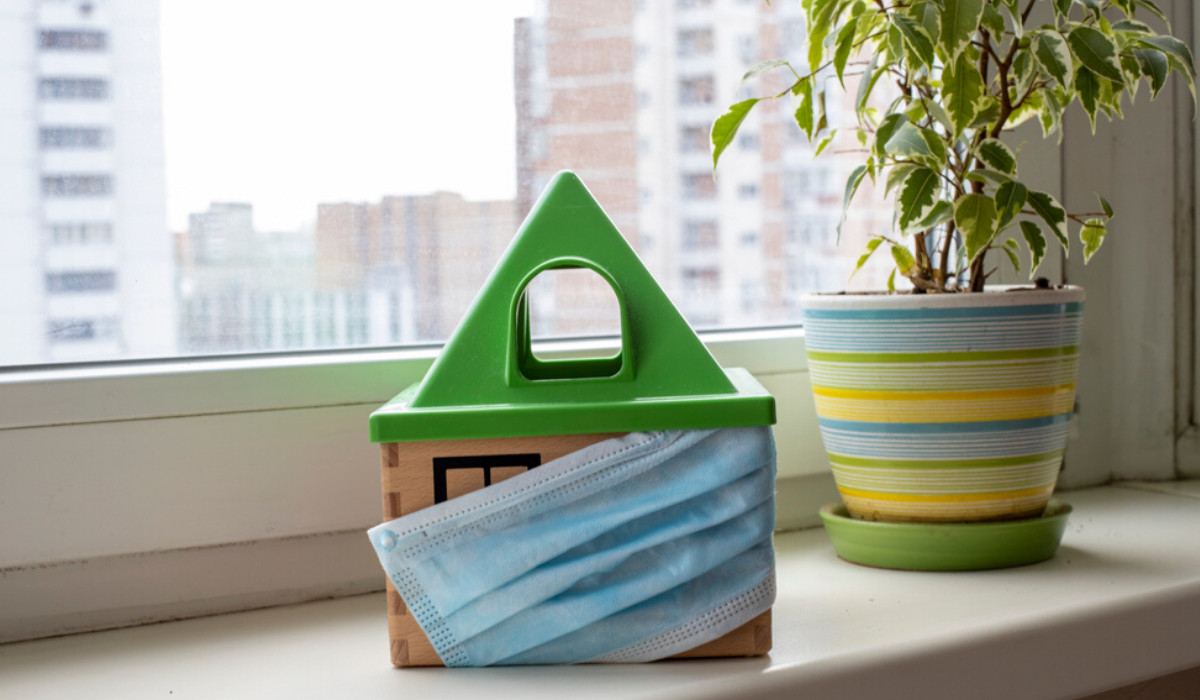THREE-TIER LOCKDOWN: WHAT DO THE NEW CORONAVIRUS MEASURES MEAN FOR THE PROPERTY MARKET?
Wednesday October 28, 2020
We explain the government’s rating system and what it means if you’re trying to buy or sell a home this winter.
Parts of England have been plunged back into lockdown after Prime Minister Boris Johnson announced new measures to help combat the coronavirus pandemic.
The government is adopting a simplified three-tier system, under which restrictions will apply on a local basis according to the severity of Covid-19 outbreaks.
The move comes as the property market enjoys a strong rebound with solid price growth as buyer demand, which built up during lockdown, continues to work its way through the system.
Under the government’s new advice, estate agents remain open and physical property viewings are still allowed across England, with a strict bookings process in place and comprehensive advice on how to follow social distancing guidelines inside properties.
However, the rules are different in Wales where a nationwide lockdown is being introduced from Friday, which will effectively shut the property market for two weeks (more on which, below).
While the latest lockdown measures may make viewing properties more difficult in some areas of England, they are unlikely to dent the current high level of interest from potential buyers.
Richard Donnell, our head of research and insights, said: “We’ve already seen how lockdown led to people carrying out a once-in-a-lifetime re-evaluation of their homes and lifestyles, with a focus on prioritising space. And the latest restrictions will continue to support this trend – particularly for those who are more financially secure.”
Meanwhile, the stamp duty holiday is continuing to act as an incentive for buyers to complete a purchase before it comes to an end on 31 March 2021.
As a result, if you want to sell your home, the current measures are unlikely to deter potential buyers.
The governments in England and Scotland are encouraging the use of virtual viewings before visiting properties in person in order to minimise public health risks, and socially distant viewings will continue to be the norm.
However, as of this weekend it will not be possible to view properties in Wales for the duration of a two-week “firebreak lockdown”.
What the different tiers mean:
Tier 1 – medium alert
In tier one areas all businesses and venues can continue to operate in a Covid-secure way, other than those that are currently closed by law, such as nightclubs.
Schools, universities and places of worship can remain open, and indoor sport and exercise classes can continue to take place. People must not meet in groups of more than six either indoors or outdoors.
Property viewings can continue to take place as long as anti-coronavirus measures are taken and there are no more than six people in the property at one time.
Such measures include the wearing of face coverings, regular hand washing, keeping doors and windows open for good ventilation during the viewing, and only two prospective buyers from the same household entering the property at a time.
Open house viewings are not allowed at this time.
If any member of either the household being viewed, or the household viewing, shows symptoms of Covid-19 or is self-isolating, then an in-person viewing should be delayed.
Most areas of England currently fall into this tier.
Tier 2 – high alert
Anyone living in a tier two area must follow all of the tier one rules, and also not meet with anybody outside of their household or support bubble in any indoor setting, including their home or a public place.
However, the current government advice states that in-person property viewings can still take place, with appropriate precautions. For the latest government advice in full check here.
Nevertheless, the ban on meeting people outside of your household or support bubble indoors means that some buyers or sellers may decide to suspend property viewings or only undertake them virtually.
Under a new agreement between the government and bailiffs, no tenants in tiers two or three can be evicted while high or very high alert level restrictions are in place. This effectively restores the eviction ban that ended in September in the most badly affected regions of England.
Areas that fall into this tier two currently include parts of Cheshire, Warrington, West Yorkshire, South Yorkshire, the North East, Tees Valley, West Midlands, Leicester, London, Essex, Elmbridge, Barrow in Furness, York, North East Derbyshire, Chesterfield, Erewash, Stoke-on-Trent, Coventry and Slough.
Tier 3 – very high alert
Tier three is reserved for areas where transmission rates of Covid-19 are causing the greatest concern.
People living in these areas are not allowed to meet anybody outside of their household or support bubble in an indoor or outdoor setting, apart from open public spaces such as parks and beaches, where the rule of six will still apply.
People are also advised not to travel in and out of these areas, other than for work, education, accessing youth services or caring responsibilities.
Restrictions in this tier are likely to have the biggest impact on the property market.
Although government guidelines don’t currently state that in-person viewings are banned in tier three regions, it can be assumed that in many cases estate agents, sellers and buyers will decide against going to see properties while restrictions are in place, unless they have no other option.
That said, renewed lockdown measures may also heighten people’s desire to move if they are unhappy with their current accommodation.
Under a new agreement between the government and bailiffs, no tenants in tiers two or three can be evicted while high or very high alert level restrictions are in place. This effectively restores the eviction ban that ended in September in the most badly affected regions of England.



